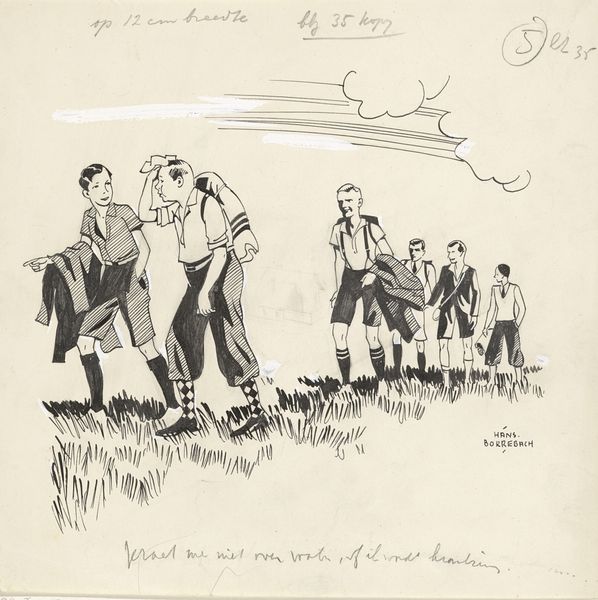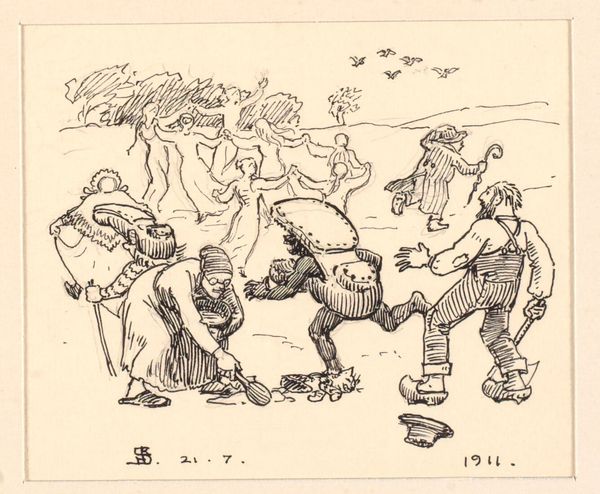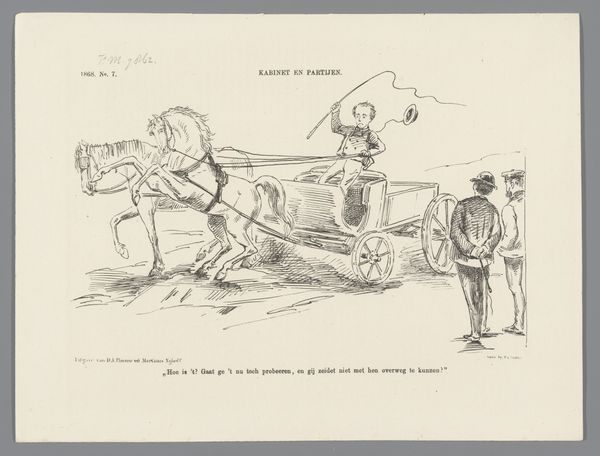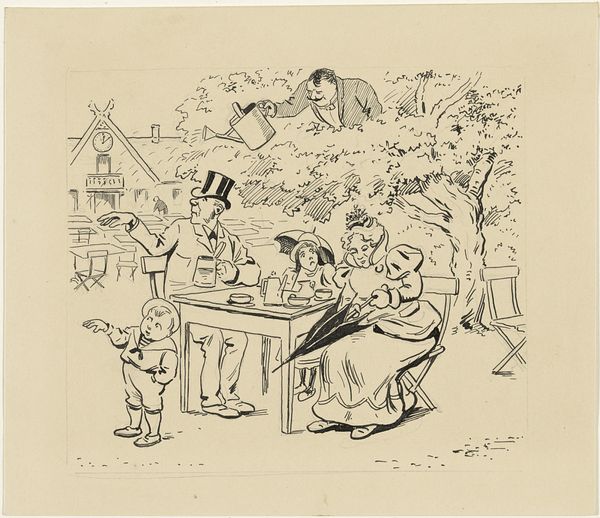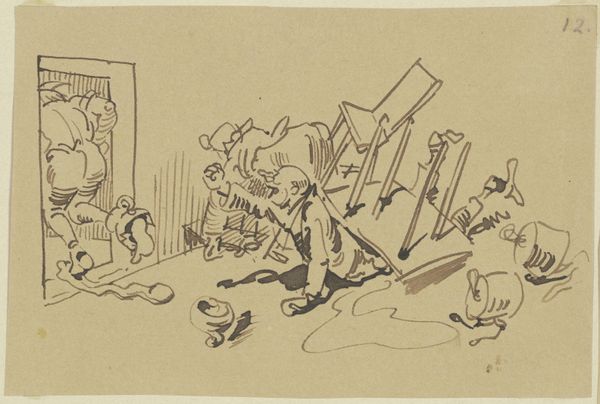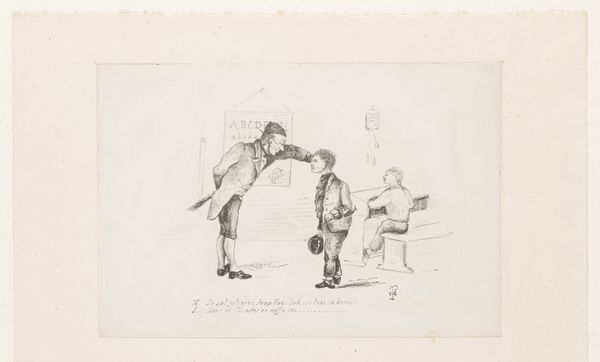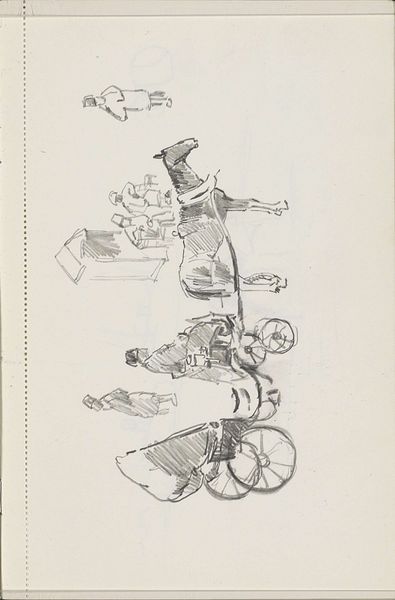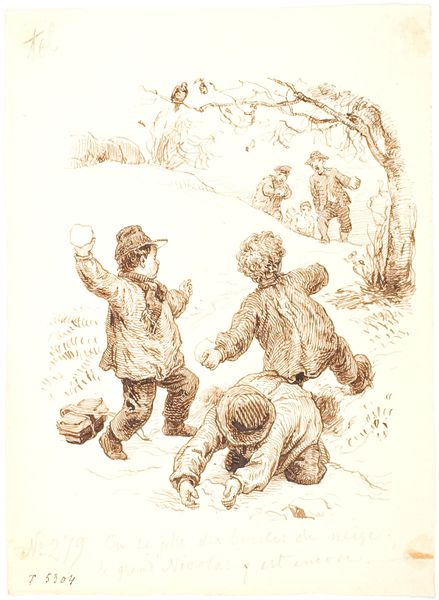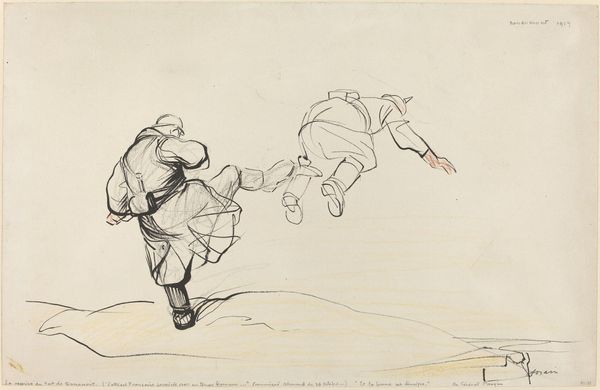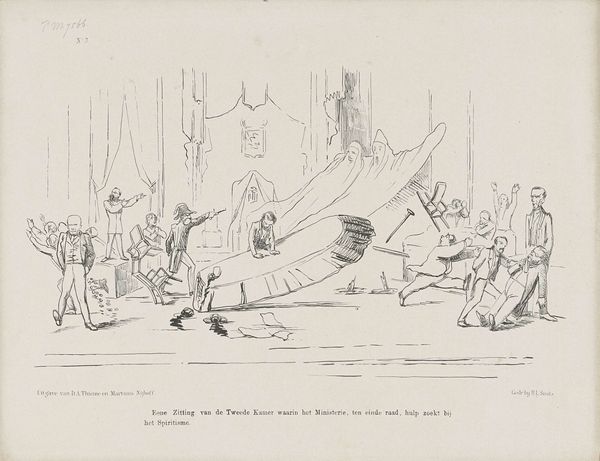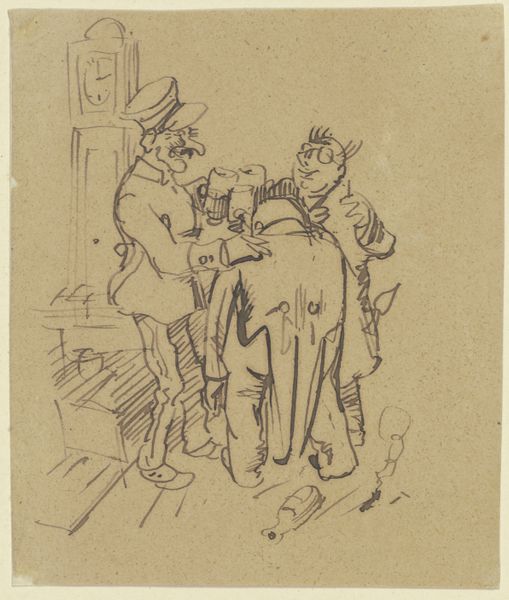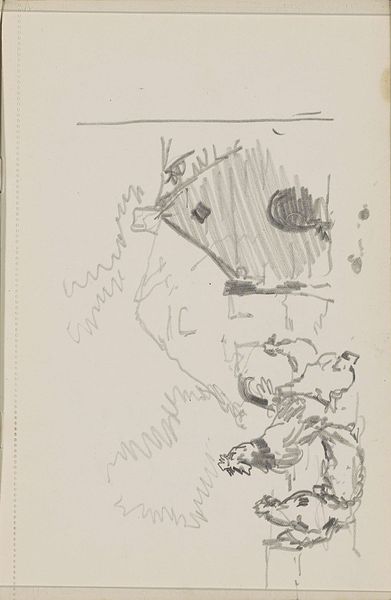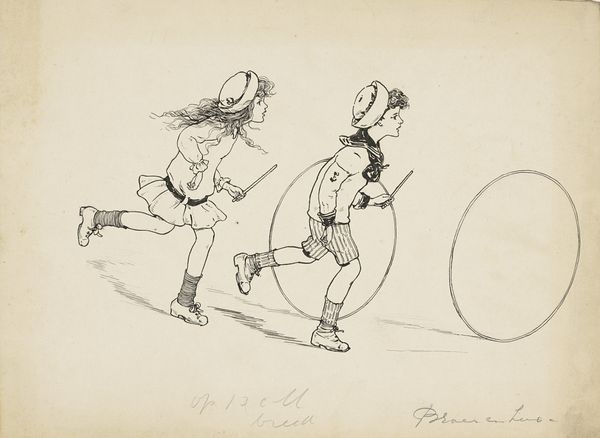
drawing, ink
#
drawing
#
narrative-art
#
figuration
#
ink
#
folk-art
#
line
Dimensions: 138 mm (height) x 138 mm (width) (bladmaal)
Curator: Immediately striking is the frantic energy captured with just ink on paper. A whirlwind of activity almost spilling off the edges. Editor: Indeed. We are looking at "Den tykke kat," or "The Fat Cat," a drawing crafted in 1911 by Niels Skovgaard. It’s part of the collection at the SMK, Statens Museum for Kunst. Skovgaard, celebrated for his depictions of Danish folklore, truly captures a palpable sense of animated community. Curator: Community yes, but there is an odd separation, socially I mean. Are those fairy figures in the back I spot? A different set of people versus the men and women in the front performing what could only be understood as farm work. Editor: What strikes me about their work is how, from the cross-hatching used to imply density and labor, it presents as crude almost; perhaps by virtue of Skovgaard's simple style, it recalls folk-art traditions, where everyday life and the local vernacular held prominence. But look at how the lines articulate material culture: tools, clothing, all conveying a sense of place. Curator: The material reality intersects strangely with an apparent symbolic realm. Are the dancing figures an evocation of idealized or mythological female figureheads or gender roles of domesticity vs a more masculine outside? What might the titular "fat cat" symbolize here as the women focus their attention toward the earthy work? Editor: The artist also focuses our attention to the laboring class, not just by placing these individuals into the foreground of his work but by virtue of their own positioning next to an almost other-worldly scene that unfolds into further ethereality and wonder. We also mustn't fail to remark how his work also subverts, in the choice of its own simplicity, a certain status or material expectation in what we can expect from art. Curator: Precisely. So in viewing "The Fat Cat," are we encouraged to see the intersections of these seemingly disparate realities. The grounded, labor-intensive lives alongside the realm of myth, symbol, and potentially, resistance? Editor: And moreover, the ways in which Skovgaard uses materials and representation to bring a localized population to light with unique simplicity of character that can also tell a wider tale of shared human experience.
Comments
No comments
Be the first to comment and join the conversation on the ultimate creative platform.
